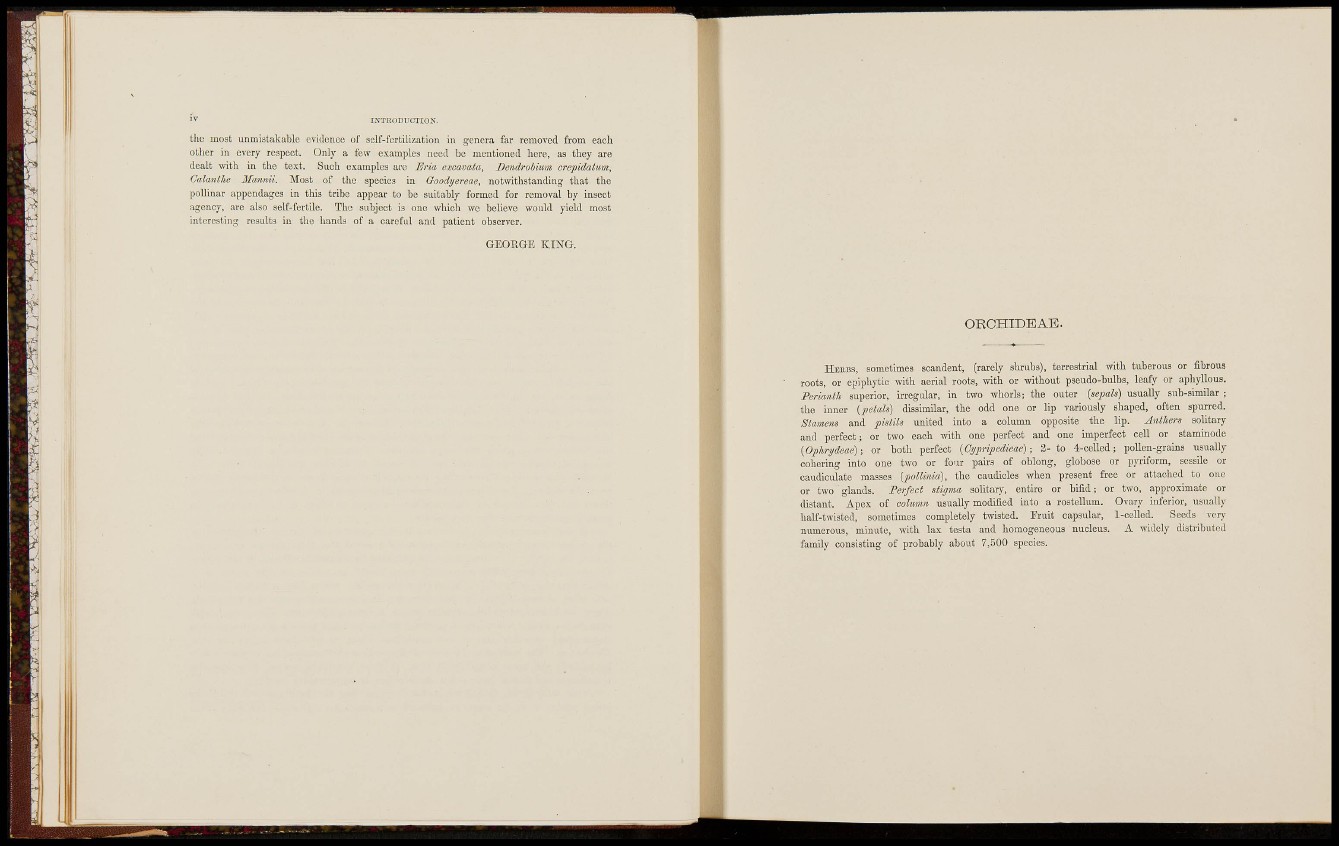
INTEODUCTION.
the most unmistakable cvidcnce of self-fertilization in genera far removed from each
other iu every respect. Only a few examples need be mentioned here, as they are
dealt with in the text. Such examples are Eria excavaia, Bmdrobmm crepidatum,
Calanfhe Mamiii. Most of the species in Goodijereae, notwithstanding that the
pollinar appendages in this tribe appear to be suitably formed for removal by insect
agency, are also self-fertile. The subject is one which we believe would yield most
interesting results ni the hands of a careful and patient observer.
GEOr.GE KING.
OEOHIDEAE.
HJ!KBS, sometimes scandeut, (rarely shrubs), terrestrial with tuberous or fibrous
roots, or epiphytic with aerial roots, with or without pseudo-bulbs, leafy or aphyllous.
Perianth superior, irregular, in two whorls; the outer (sepals) usually sub-similar ;
the inner {petals) dissimilar, the odd one or lip variously shaped, often spurred.
Stamens and pistils united into a column opposite the lip. Antlers solitary
and perfect; or two each with one perfect and one imperfect cell or staminode
(Opimjieae) •, or both perfect (Oj/pripedieae); 2- to 4-celled; pollen-grains usually
cohering into one two or four pairs of oblong, globose or pyriform, sessile or
caudiculate masses [polUma), the caudicles when present free or attached to one
or two glands. Perfect stigma solitary, entire or bifid; or two, approximate or
distant. Apex of column usually modified into a rostellum. Ovary inferior, usually
half-twisted, sometimes completely twisted. Fruit capsular, 1-celled. Seeds very
numerous, minute, with lax testa and homogeneous nucleus. A widely distributed
family consisting of probably about 7,500 species.